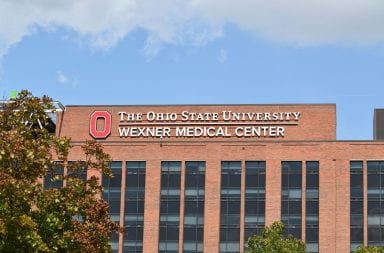Picture it: a family is dining at a local Chinese restaurant. The walls are covered with all kinds of Oriental art, and lanterns inscribed with Chinese script hang from the ceiling.
The food tastes very authentic. All the hot spices, and the chopsticks, which are placed beside each plate, add to the atmosphere — an atmosphere that makes the diners believe they’re actually in China.
Then, suddenly, the speakers begin blaring. No, it’s not what most might think; it’s not Chinese music that’s playing in the background. Instead, it’s Shakira singing at the top of her lungs. Even more interesting, she’s not singing in English. She’s singing in Spanish.
Now, Spanish and Chinese are an interesting combination, but hold on — there’s more.
Oasis — the restaurant I’ve been describing — is not found anywhere in the United States. Actually, it is located in the UAE.
For those who are wondering, UAE is not the University of Arkansas-Eastland. And, no, it is not a place found in Upper Arlington, which is what some people thought of when I told them I was going to the UAE for winter vacation.
The UAE actually stands for the United Arab Emirates, a country located in the Middle East in the Persian Gulf.
When I went to the UAE over Christmas break, I didn’t know what to expect. Having been to other Middle Eastern countries, I wasn’t as excited. I already knew Arab and Islamic culture. I didn’t expect anything new.
I was wrong.
While it is located in the Middle East, the UAE is as different as it can possibly get from other Arab countries. In fact, it could be considered the melting pot of the Arab world. The number of people from different races, cultures and is unbelievable.
There are Americans, Indians, Pakistanis, Chinese, British, French and Germans, and don’t forget the Arabs from Egypt, Palestine, Lebanon and Syria. Everywhere, each individual had a unique background. It truly was amazing. In fact, the number of foreigners in the country outnumber the natives.
It wasn’t surprising to walk into a grocery market and hear one couple speak in English, an old woman speak in French and two little children, whose eyes were glued to the candy rack, talking in Punjabi.
For any American, it’s not surprising to find Santa Claus bouncing a child upon his leg as their picture is taken at the local mall, but for other countries, such an event may not be accessible to their country’s citizens.
But Santa Claus was all over the place in the UAE. His picture was plastered on store walls. Little exhibits of jolly old St. Nick with his reindeer were around every corner in the malls.
Children from different countries couldn’t wait to stand in line to have their pictures taken. They also believe in Santa Claus.
During the night, trees, buildings and anything else that could possibly align the roads glittered with light, not only for Christmas but also the New Year and the UAE’s founding anniversary. As an Ohioan used to seeing the lights spark from branches of pine trees covered with falling flakes of snow, seeing the lights among the dirt and sand was a little disconcerting.
However, the designs combined both American and UAE tradition. It’s true they decorated the trees with lights, but these weren’t the normal pine trees most Americans are used to seeing. Instead, the colorful bulbs ran up the trunk and through the branches of palm trees. Pine trees are difficult to find in the UAE.
Right alongside the Christmas decorations was Islamic art — providing an interesting contrast. Signs with Islamic phrases, hung on the door of many of the local mom and pop stores, greeted everyone. In the taxi cabs, while a little Santa Claus may have stood on the dashboard, a small Quranic verse hung from the mirror. Both religions were mixed together in an unlikely and incredible fashion.
It’s true that the United States is a melting pot of American Indians, Europeans, Latinos and other cultures, but I never saw a more obvious melting pot than that prevalent in the UAE.
R.H. Aly is The Lantern copy editor and can be reached for comment at [email protected].


